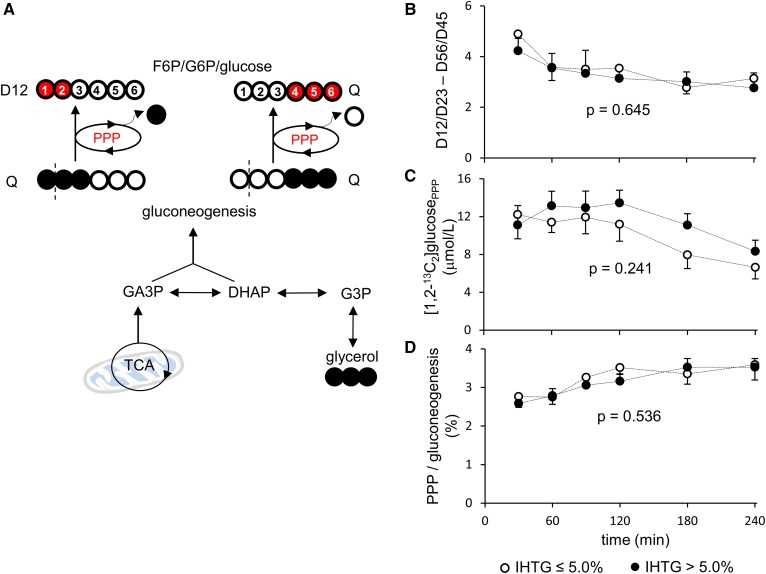Fig. 5.
Hepatic PPP activity. A: Gluconeogenesis directly from [U-13C3]glycerol produces [1,2,3-13C3] or [4,5,6-13C3]hexose. When these hexose isotopomers enter the full cycle of PPP, [1,2-13C2] and [4,5,6-13C3]hexose are produced from [1,2,3-13C3] and [4,5,6-13C3]hexose, respectively. Note that the labeling pattern of [4,5,6-13C3]hexose remains the same, whereas double-labeled, [1,2-13C2]hexose is produced from [1,2,3-13C3]hexose through the PPP activity. Thus, the PPP activity leads to ratio difference between [1,2-13C2]/[2,3-13C2] and [5,6-13C2]/[4,5-13C2] in glucose. B, C: The ratio difference and the concentration of [1,2-13C2]glucose produced through the PPP are similar between the low and high-IHTG groups. D: PPP flux relative to gluconeogenesis is also similar between the groups. Open circle, 12C; black circle, 13C; red circle, 13C after experiencing the PPP; n = 7 or 8 at each time point; P value was determined by two-factor ANOVA with replication analysis.

